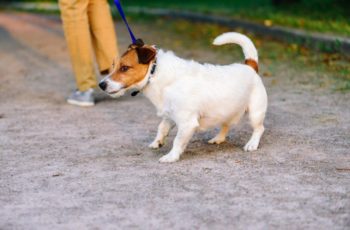You can cut a dog’s whiskers, and they will grow back. The bigger question is, why do you need to cut your dog’s whiskers?
What Are Whiskers For?
Whiskers give the dog important sensory and protective information. Whiskers detect motion and are sensitive to air currents. If you touch his whiskers, your dog will often reflexively blink because of the information the whisker transmitted to the brain: Something is near the face, protect the eye! Whiskers serve an important sensory and protective function for your dog.
Dogs use whiskers to navigate in the dark. Whiskers help keep blind dogs, or dogs with another visual impairment, from running into objects. Whiskers work so well that many blind dogs can explore new environments so easily that a person watching could be fooled into thinking the blind dog can see.
Whiskers, also known as vibrissae, are specialized hairs that grow on the upper lip, chin, and above the eyes. Whiskers are present in many mammals, including dogs. Whiskers arise from specialized follicles in the skin and are thicker and stiffer than the normal coat. If the hair on your dog’s face is left to grow naturally, the whiskers often grow longer than the rest of the facial hair.
Cutting Dog Whiskers
Dogs have whiskers, but sometimes they are trimmed or clipped. This is often because in order to keep the fur on the face short, they are often clipped off with the rest of the facial fur, especially in breeds that grow longer facial hair, such as Poodles and Schnauzers. This helps to keep the face tidy, making it is easier to remove food or teat stains. Sometimes the whiskers are trimmed on dogs who compete in conformation (the Westminster Kennel Club show is an example of this), the rationale being that the whisker-free face presents a clearer picture of the dog’s head silhouette. Trimmed whiskers do eventually grow back.
The post Can You Cut Dog Whiskers? appeared first on Whole Dog Journal.


